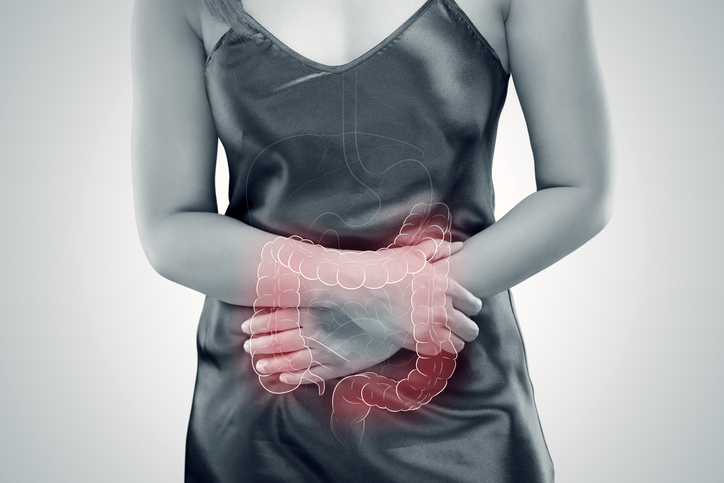Pain
Types of Colitis

Colitis is defined as an inflammation of the large intestine (colon). The most common types of colitis include inflammatory bowel disease (ulcerative colitis and Crohn’s disease), pseudomembranous colitis and ischemic colitis. Colitis can be acute or chronic and ranges from mild to severe.
Symptoms of colitis
Although symptoms of colitis differ depending on the type, common symptoms of colitis include, but are not limited to, pain in the abdomen, diarrhea (with or without blood), bloating and cramps in the abdomen, frequent and small bowel movements, weight loss, fatigue, and the inability to defecate despite urgency. Although rare, mouth and skin sores may also appear. These symptoms are chronic and often intensify as the condition progresses. Colitis can range from mild and irritating to debilitating and, in severe cases, even life-threatening.
Types of colitis
Colitis is categorized into several types including, but not limited to, inflammatory bowel disease (ulcerative colitis and Crohn’s disease), pseudomembranous colitis and ischemic colitis.
Ulcerative colitis
Ulcerative colitis, an inflammatory bowel disease (IBD), is the most common type of colitis. While the direct cause of ulcerative colitis is still unknown, the disease is chronic and tends to run in families. In ulcerative colitis, the immune system overreacts and mistakenly attacks helpful bacteria in the large intestine (colon) and rectum. The body's mistaken immune response causes ulcers that affect the innermost lining of the large intestine and the rectum.
Ulcerative colitis is often classified into subcategories depending on the location of the disease. These subcategories include ulcerative proctitis (inflammation limited to the rectal area), proctosigmoiditis (inflammation in the rectum and sigmoid colon), left-sided colitis (inflammation in the rectum and the sigmoid and descending colon), pancolitis (inflammation in the entire colon), and acute severe ulcerative colitis (inflammation involves the entire colon and is accompanied by fever).
Pseudomembranous colitis
Pseudomembranous colitis is an acute inflammation of the colon that manifests when bacterium quickly proliferate. Clostridium difficile (C. diff) is the most common bacteria that causes pseudomembranous colitis. Strong courses of antibiotic therapy can cause C. diff by killing healthy bacteria and allowing Clostridium bacteria to quickly multiply. Symptoms include watery diarrhea, dehydration, fever and stomach pain.
Ischemic colitis
Ischemic colitis occurs when blood flow to the colon is limited or partially obstructed. Causes of ischemic colitis include, but are not limited to, volvulus (twisted colon) incarcerated hernia, atherosclerosis, diabetes, heart failure, blood clots, vasculitis, colon cancer and even dehydration. Infections can also cause ischemic colitis. Bloody diarrhea, fever, and significant stomach pain are the main symptoms of ischemic colitis.
Diagnosis and treatment of colitis
It is imperative to get a proper diagnosis of colitis. Diagnostic tools include blood tests, colonoscopy, stool samples, X-rays, CT scan, flexible sigmoidoscopy, computerized tomography (CT) enterography, and magnetic resonance (MR) enterography. Treatment usually involves anti-inflammatory, immunosuppressive, anti-diarrheal and/or pain medications, antibiotics, iron supplements, and, in severe cases, surgery. Self-care includes lifestyle changes to limit flare-ups of colitis. Keeping a food journal to note which foods contribute to flare-ups, talking to a doctor about supplements that may help symptoms, and limiting stress with exercise and meditation can aid in keeping flare-ups of colitis at bay.










